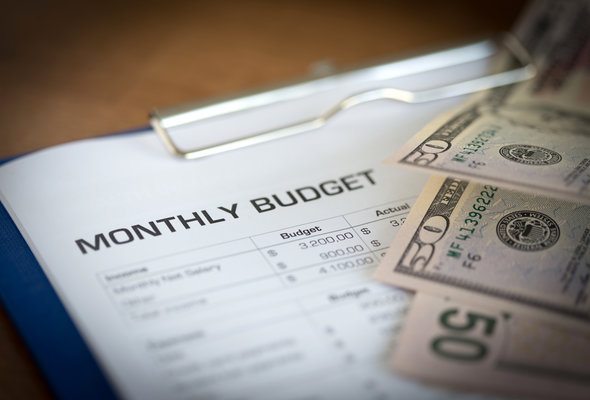While it’s hard to pin down the keys to financial success, having a budget plays a part. Budgets are crucial to taking control of your finances and understanding where your money goes. Knowing that, you can then improve your habits to increase your savings and boost your net worth. Of course in order to follow a budget, you need to know how to make a budget.
A financial advisor can help you analyze your spending and develop a budget structured around your long-term goals and strategies.
Why Do I Need a Budget?
You might be thinking that you can handle your finances without a budget. While that may be true, a budget can make managing your money and your future a lot easier. It sets concrete limits and goals that you can follow. You can also adjust your budgets as necessary, like when emergencies or life changes come along.
Even if you keep your spending in check, a budget can help you see where you can be saving even more money. Maybe you’re overpaying on your phone bill, but you haven’t noticed yet. Creating a monthly budget can help you move that money over to an area that needs it more, like your retirement savings.
Luckily, you don’t have to start entirely from scratch when making a budget. If you’re still hesitant, there are a ton of tools like this budget calculator available online. You can easily find budget spreadsheets and printouts, too.
How to Make a Budget: Step 1 – How Much Do You Make?
Your first step is to determine how much ends up in your bank account at the end of each month.. You’re going to want to look at your net income. This is what’s left after deductions for health care, Social Security, 401(k) and other possible deductions.
If you live off of an irregular income, like freelancing income, you can take the average earnings over the past six to 12 months. You could round that amount down, or even just take the lowest amount, to give yourself some more wiggle room.
How to Make a Budget: Step 2 – Track Your Spending
Now that you know how much money is coming in, you need to look at where it’s all going. First, take a look at the necessary and fixed costs. This includes (but is certainly not limited to) phone bills, credit and debit card statements, utility bills, mortgage payments, student loans and anything else that requires a monthly payment. It will definitely help to collect all your bills and statements over the previous months to make sure you don’t miss anything.
Take a look at how much you spend each month on those areas. Depending on your preference, or the spreadsheet you’re using, you can get as (un)specific as you want. For example, you can pile certain costs under “Housing,” or you could list out rent, gas bill, electric bill, etc.
Next, take a look at your variable expenses. This includes what you’ve spent at restaurants, bookstores, filling up the tank, grocery shopping, etc. Again, you can be as specific as you want. Just make sure you account for everything.
When you’ve added all these monthly costs together, subtract that amount from your monthly income. If it comes out negative, you’re spending too much! This means you’re going to have to make some changes when you plan out your budget. If it comes out positive, then you’re on the right track. There’s always room for improvement, though, so you may still want to prepare to make some cuts.
How to Make a Budget: Step 3 – How Much Do You Owe?

So we know where your money has been going. Now it’s time to look at areas where you still owe money. This adds up what you owe for things like car loans, a mortgage, student loans, credit card debt and more.
Knowing how much debt you’re in may be scary at first. But putting a number to it will help you pay it off in a more tangible way. Creating a budget in the first place is already a good step toward paying off those debts. When you’re done with your budget, you’ll be able to see the areas where you can cut back on spending. Then you can put that extra savings towards paying off your debts.
How to Make a Budget: Step 4 – Set Your Goals
Time to step away from all the numbers for a second. Before you dive back in, set some financial goals for yourself. Do you want to save more for retirement? Do you need to save for your children’s college expenses? Are you aiming to pay off your student loans within five years?
Set both long-term and short-term goals. That way you can work toward those goals and celebrate when you’ve achieved them. Keep in mind that these goals should include saving. Saving for retirement, for an emergency, and for future expenses is crucial for financial success. So while saving for your next flat screen TV can seem more exciting, don’t forget the important stuff.
You can set specific amounts to these goals too if that helps you more. For example, instead of saying you want to save money this year, say you want to save $500 by the end of the year. That way, you can more actively track your progress and cut spending when necessary.
How to Make a Budget: Step 5 – Make a Plan
OK, back to your budget. It’s time to make a plan! This means planning out your monthly expenses for the future, rather than spending willy-nilly.
To start, take your necessary expenses. These would be your rent, utility bills, gas costs, etc. These are the things you cannot live without each month. Set those expenses down in your budget.
You should also include a savings aspect as a necessary expense. That way, you already account for savings and can be held to it each month, rather than making it expendable. If you have problems saving, you can easily set up a savings account with recurring monthly deposits. This allows you to set it, forget it and treat it as an ongoing necessity.
Then take a look at your more frivolous expenses. Here’s where you’ve got to be honest with yourself. Do you really need to buy a new pair of shoes every month? Or maybe you and your family are eating out too often. If you can’t quite cut something out completely, try shaving off your spending in a few different areas. Instead of entirely nixing take-out dinners, spend less on that, your daily coffee, and treating yourself while running errands. While it might be hard to cut back on certain luxuries, boosting your savings and paying off debts should come first.
How to Make a Budget: Step 6 – Follow Your Budget & Adjust as Necessary
Now that you’ve made your budget, it’s time to stick to it. This can be difficult, especially when it comes to curbing your “fun” spending. But creating a budget is useless if you don’t follow it. Make sure you understand your needs vs wants when making your budget, then stick to it closely, especially at first.
It’s important to remember that you will adjust your budget along the way. If you get a raise, you can put more money toward savings and dining out. Conversely, if you get hit with an illness or job loss, you may have to cut back on your “wants” even more. You may even have to make adjustments if gas prices go up, for example. Whatever you do, don’t just set your budget and forget it.
Budgeting Methods to Try
Now that you’ve built your budget, it’s worth exploring different budgeting methods to see which one best suits your financial habits and lifestyle. Not all budgets are created equal—and the best one is the one you can actually stick with. Here are three popular approaches you might consider:
1. The 50/30/20 Rule
This method divides your after-tax income into three main categories:
- 50% for needs: housing, groceries, utilities, transportation, insurance
- 30% for wants: dining out, entertainment, hobbies, travel
- 20% for savings and debt repayment: emergency fund, retirement, credit card or loan payments
The appeal of the 50/30/20 budget rule lies in its simplicity. It offers structure without requiring obsessive tracking of every expense. It’s especially helpful for people new to budgeting or those who want a balanced lifestyle without sacrificing savings.
2. Zero-Based Budgeting
In a zero-based budget, every dollar you earn is assigned a specific purpose—whether it’s for bills, savings, or spending—until your income minus expenses equals zero. This doesn’t mean you’re spending every penny, but rather that you’re giving every dollar a job.
This method requires more attention and monthly planning, but it can be a powerful tool for those who want to optimize every dollar or tackle debt aggressively. It’s especially popular among detail-oriented individuals who like granular control over their finances.
3. The Envelope System
This traditional, cash-based system involves placing physical cash into envelopes labeled by spending category (e.g., groceries, gas, entertainment). Once an envelope is empty, you stop spending in that category for the month.
While more analog, the envelope saving method can be a great way to build discipline around discretionary spending. It’s best suited for people who struggle with overspending and benefit from visual or tactile feedback.
Each of these methods has its pros and cons, and you might find that combining elements from different systems works best. The key is to experiment and adapt until you find a budgeting style that supports your goals and fits seamlessly into your life.
Bottom Line

Knowing how to make a budget will prove incredibly beneficial for you and your finances. Taking stock of your money will allow you to have more control over it. That way, you can save more money, manage debts, and invest more towards your future.
Tips for Sticking to a Budget
- A financial advisor can help you come up with a realistic financial plan and then keep you on track. Finding a financial advisor doesn’t have to be hard. SmartAsset’s free tool matches you with vetted financial advisors who serve your area, and you can have a free introductory call with your advisor matches to decide which one you feel is right for you. If you’re ready to find an advisor who can help you achieve your financial goals, get started now.
- When making your budget, you may also want to take a look at your debit/credit card usage. It’s easy to overspend on those little pieces of plastic when it doesn’t seem like you’re spending money. One solution could be to cut back on your card usage. Take out some cash, leave the cards at home and make that cash stretch over a couple weeks (or more!). Otherwise, you could wreck your budget or end up in some serious credit card debt.
Photo credit: ©iStock.com/cnythzl, ©iStock.com/tacojim, ©iStock.com/PeopleImages
